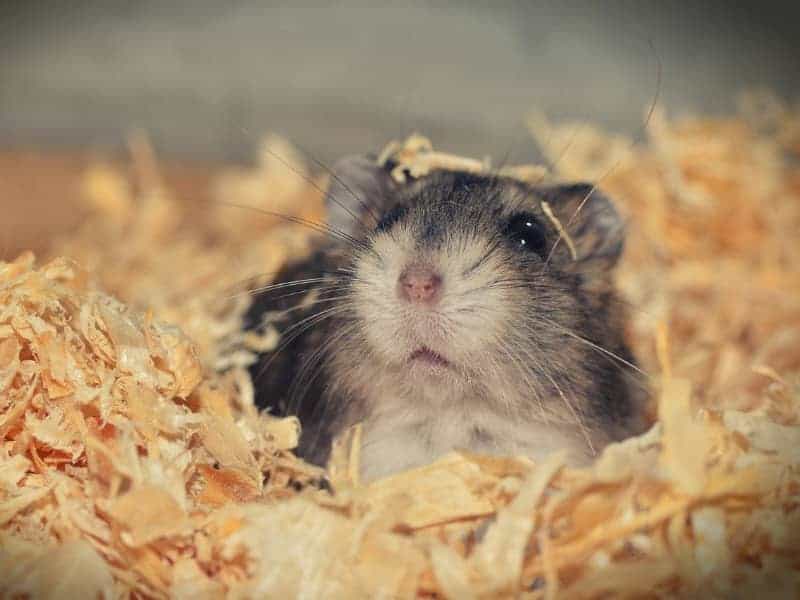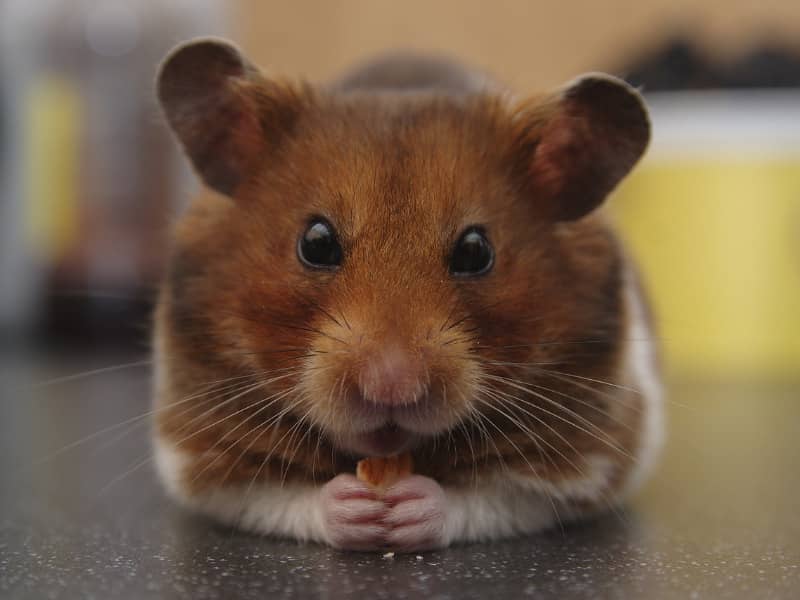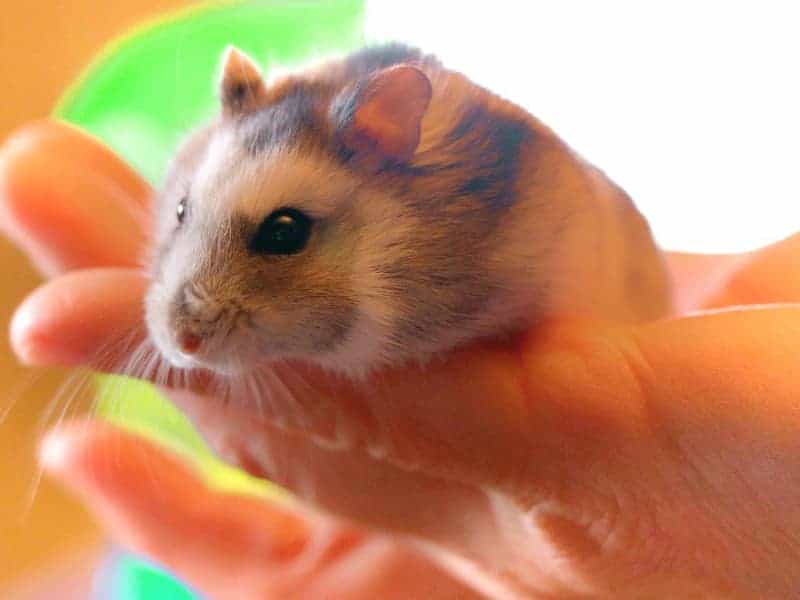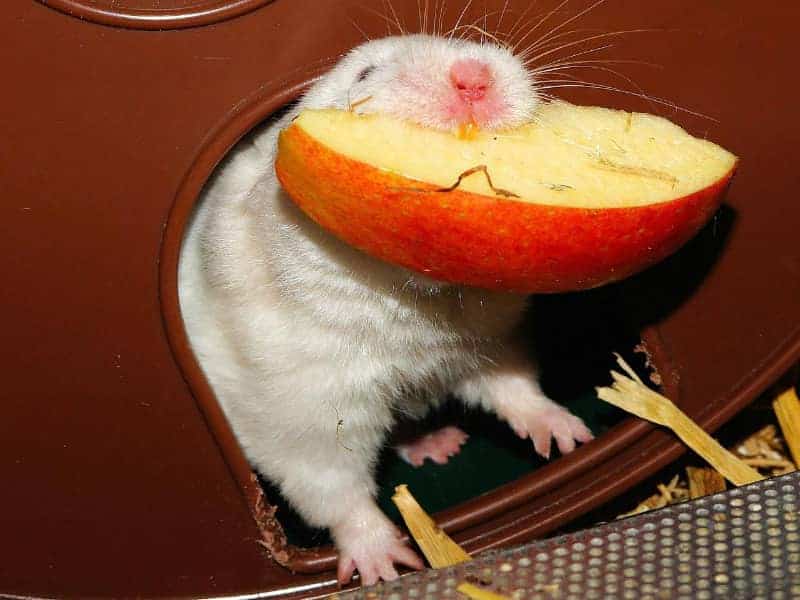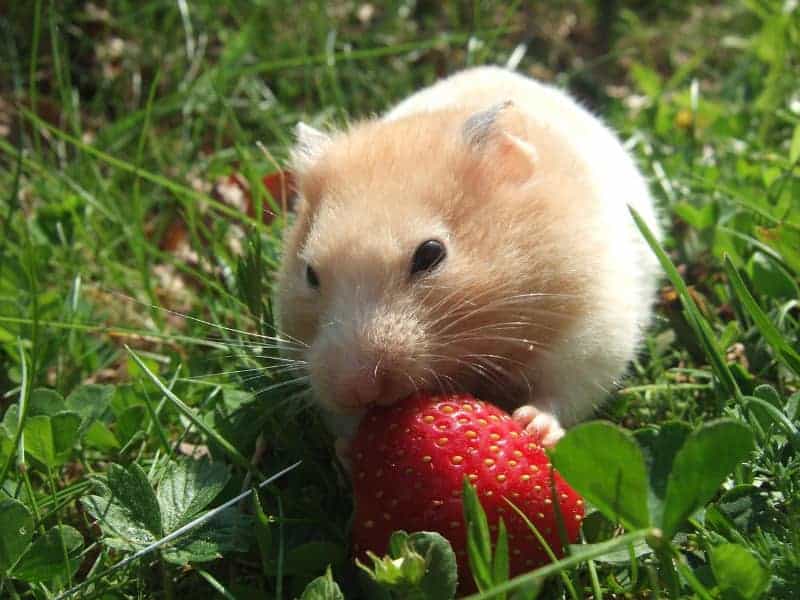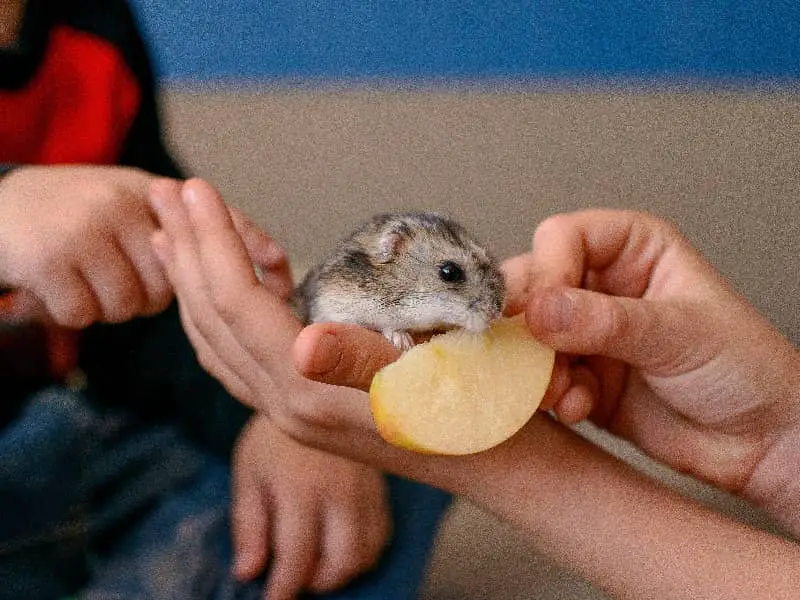
Tame hamster
Taming a hamster is not only interesting for you as the owner, but also for the little rodent itself. A tamed hamster is usually happier, less stressed and easier to care for.
- Tame hamster
- Tame hamster - confidence building
- Taming hamster - The right preparation
- Tame hamster - First steps
- Taming Hamsters - Advanced Techniques
- Taming hamsters - common mistakes and how to avoid them
- Tame hamster - Conclusion
- FAQ about taming hamsters
- How long does it take to tame a hamster?
- Can any hamster be tamed?
- What treats are best for taming?
- How often should I conduct practice sessions?
- What do I do if my hamster bites or is aggressive?
- Can I tame several hamsters at the same time?
- How do I know my hamster is ready for taming?
- Do I need to buy special utensils for taming?
- What do I do if the hamster is afraid of my hand?
- Does it make sense to take the hamster out of the cage?
- Can I put my hamster with other pets?
Tame hamster - confidence building
A hamster is a rather shy animal by nature. Taming helps to create a bond of trust between you and your hamster. This is especially important because a hamster that trusts its owner is less stressed and feels more secure.
A relationship of trust also makes many aspects of care easier, such as feeding or cleaning the cage. A hamster that trusts you is less likely to bite or run away when you try to grab it.
Trust is not built overnight. It requires patience, consistency and a series of positive interactions. Remember that each hamster is an individual and takes its own time to build trust.
Improve the quality of life of the hamster
A tamed hamster is usually a happy hamster. By taming, you greatly improve the quality of life for your little friend. A hamster that feels safe and secure will be more active, play more and lead a generally healthier life.
Taming can also help minimize behavior problems. An unhappy hamster may show signs of stress or even aggression. By taming and the positive interaction that comes with it, you can often avoid or at least reduce such behavioral problems.
It is important to emphasize that the hamster's welfare should always be paramount. Taming should never be forced, but should always be done at the hamster's pace.
Simplification of care
A tamed hamster is not only beneficial for itself, but also makes your life easier. Daily care, such as cleaning the cage or feeding, becomes much easier when your hamster trusts you.
A hamster that is easy to catch also makes it easier for you to visit the vet. You'll have to spend less time and energy coaxing your hamster out of its hiding place, which reduces stress for both parties.
Overall, a tamed hamster makes care not only easier, but more enjoyable. Interacting with a trusting hamster can be very rewarding for you as an owner and give you a deeper understanding of your little friend's needs and behavior.
Taming hamster - The right preparation
Before you start taming your hamster, there are some important preparations to make. These will make the whole process easier and provide a more positive experience for you and your hamster.
Choosing the right time
Choosing the right time is crucial for the success of the taming process. Hamsters are nocturnal animals, which means they are mostly asleep during the day and more active at night. Therefore, it is advisable to schedule taming sessions in the evening hours when the hamster is awake and active.
It is also important to choose a time when you yourself have time and patience. Stress or hectic can have a negative effect on the taming process. So plan enough time and make sure that you yourself are in a calm and relaxed mood.
Creating a safe environment
Before you start taming, you should make sure that the environment is safe and comfortable for the hamster. This means that the cage should be clean and there should be no loud noises or other disturbances.
A safe space gives the hamster a sense of security and makes it easier to approach. Some keepers also use special "taming areas" set up outside the cage. These should also be safe and free of hazards.
Necessary utensils
You don't need a lot of utensils for the taming process, but some things are still helpful. These include treats, which serve as positive reinforcement, and possibly gloves if the hamster is still very shy at first.
A small towel can also be useful to carefully pick up the hamster without startling it. Some keepers also use special hamster balls for the first excursions outside the cage, but their use is controversial and should be done with caution.
Tame hamster - First steps
Now that you have made the preparations, the first steps to approaching your hamster can begin. This phase is crucial to create a solid foundation for further taming.
Observe behavior of the hamster
Before you start actively taming your hamster, it makes sense to observe its behavior closely. This will give you valuable information on how best to proceed. Pay attention to the hamster's body language, its movements and its reactions to your proximity.
A relaxed hamster that is curiously exploring its surroundings is usually ready for its first approaches. A fearful or stressed hamster, on the other hand, may need more time and rest before you start taming.
Food as positive reinforcement
One of the most effective ways to approach your hamster is to use food as positive reinforcement. Treats or small pieces of fresh fruits and vegetables can help gain the hamster's trust.
Start by holding the food in your hand and offering it to the hamster without crowding him. Allow him time to approach and take the food. This is an important first step in showing the hamster that there is no danger from you.
Patience and consistency
Patience and consistency are the keys to success when taming a hamster. Don't expect your hamster to be fully tamed after one or two sessions. It can take weeks or even months for a hamster to fully gain confidence.
Continue taming sessions regularly and try to practice at the same time each day. This will give the hamster a routine and help him get used to interacting with you.
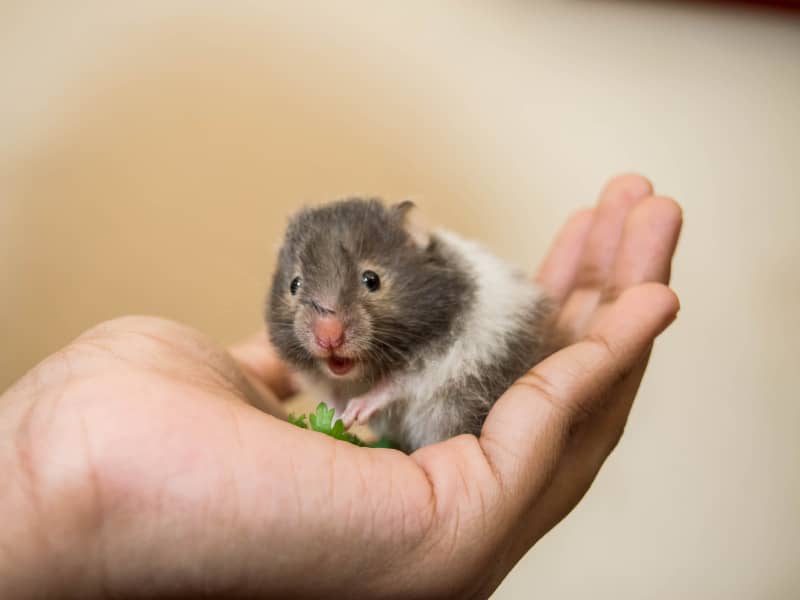
Taming Hamsters - Advanced Techniques
After you have successfully mastered the first steps of approaching your hamster, you can move on to more advanced techniques. These will help you further deepen the relationship with your hamster and fully gain his trust.
Hand training
Hand training is an effective method to intensify the interaction with your hamster. The goal is for the hamster to voluntarily climb onto your hand and feel safe there. Start by placing your hand flat in the cage and let the hamster climb on it by itself.
Avoid quick or jerky movements, as these may startle the hamster. Once the hamster feels secure enough to stay on your hand, you can try to gently lift it.
Hand training is not only a real way to build your hamster's confidence, but also an effective way to safely take him out of the cage for a vet visit, for example.
Free running and exploration
Another important aspect in the taming process is free running. A hamster that has the opportunity to explore its environment outside the cage will usually be more active and curious.
Make sure the room where the free run is taking place is safe and hamster-friendly. Remove any potential hazards and make sure the hamster can't escape. You can also set up toys or tunnels to keep the hamster occupied.
Dealing with fears and aggression
Despite all efforts, it may happen that a hamster shows signs of fear or aggression. In such cases, it is important to identify the cause of this behavior. Often it is small changes in the environment or daily routine that stress the hamster.
In such cases, it is advisable to take a step back and give the hamster more space and time. Aggressive or fearful hamsters should never be forced to approach you. Instead, you should be patient and allow the hamster to approach you on its own.
Taming hamsters - common mistakes and how to avoid them
When taming a hamster, a lot of things can go right, but a lot can also go wrong. To save you and your hamster unnecessary stress, it's helpful to know some of the most common mistakes and how to avoid them.
Hamster overload
A common mistake is over-pressuring your hamster, especially in the early stages of the taming process. It is understandable that you want to build a close relationship with your hamster as quickly as possible, but too much pressure can be counterproductive.
An overtaxed hamster may show signs of stress or even aggression. Therefore, it is important to take the taming process slowly and at the hamster's pace. Pay attention to his body language and reactions to make sure he is comfortable and not stressed.
Wrong feed selection
Using food as positive reinforcement is an effective method, but the wrong food selection can cause problems. Some foods are unhealthy or even toxic for hamsters.
Therefore, find out in advance which foods are suitable for your hamster. Avoid sugary or fatty foods and instead opt for healthy options like vegetables or special hamster treats.
Inconsistent training times
Another common mistake is inconsistent training times. Hamsters are creatures of habit and feel more comfortable when they have a set routine. Therefore, try to always conduct taming sessions at the same time.
Inconsistent training times can confuse the hamster and make the taming process more difficult. A set schedule helps the hamster get used to interacting with you and makes the whole process more effective and enjoyable for both parties.
Tame hamster - Conclusion
Taming a hamster is a rewarding, if sometimes challenging, process. It requires patience, consistency and a deep understanding of your little furry friend's needs and behavior. The key to success lies in preparation, the right approach, and avoiding common mistakes.
A tamed hamster is not only easier to care for, but also a happier and healthier animal. So the time and effort you put into the taming process will pay off for both parties.
Remember that each hamster is an individual and needs its own time and space to build trust. However, with the right approach and a dose of patience, you will be able to build a deep and enriching relationship with your hamster.
That's the bottom line on taming hamsters. I hope the blogpost provides a comprehensive and helpful overview.
FAQ about taming hamsters
How long does it take to tame a hamster?
The length of the taming process can vary from hamster to hamster. Some hamsters may be tamed in as little as a few weeks, while others may take several months. Patience and consistency are the keys to success here.
Can any hamster be tamed?
Most hamsters can be tamed, but there are exceptions. Some hamsters have difficulty gaining trust because of their history or temperament. In such cases, the taming process may take longer or be less successful.
What treats are best for taming?
Healthy options such as small pieces of vegetables or special hamster treats are ideal. Avoid sugary or fatty foods as these can be unhealthy for the hamster.
How often should I conduct practice sessions?
Ideally, you should do a short practice session at the same time each day. This will help the hamster get used to interacting with you and develop a routine.
What do I do if my hamster bites or is aggressive?
Aggressive behavior or biting are often signs of stress or anxiety. In such cases, it is important to take a step back and give the hamster more space and time. Also consider if there are certain triggers for this behavior, such as a noisy environment or a sudden change in the cage.
Can I tame several hamsters at the same time?
Taming multiple hamsters at the same time is possible, but more complicated. Each hamster has its own personality and pace of taming. It is therefore advisable to focus on one hamster first before you try to tame several at the same time.
How do I know my hamster is ready for taming?
Signs that a hamster is ready for taming may include curiosity and generally relaxed behavior. If the hamster hides or reacts aggressively, it is probably not ready for the taming process.
Do I need to buy special utensils for taming?
As a rule, you do not need any special utensils. However, some keepers use gloves or small towels to make it easier to pick up the hamster in the beginning.
What do I do if the hamster is afraid of my hand?
In this case, it is helpful to just put your hand in the cage at first and let the hamster climb on it by itself. Quick movements should be avoided so as not to frighten the hamster.
Does it make sense to take the hamster out of the cage?
Yes, but only after a certain level of trust has been reached. A safe, hamster-friendly room is ideal for free-range exercise. Make sure the room is free of hazards such as poisonous plants or electrical cords.
Can I put my hamster with other pets?
It depends on the animal in question. Generally, caution is advised when you try to introduce a hamster to other pets such as dogs or cats. A separate introduction under supervision is recommended.
Author

-
Garden animal - A life with nature
Welcome to my animal blog! My name is Dirk and I am happy to take you on my journey through the fascinating world of animals and gardening.
Born 54 years ago, I have had an insatiable curiosity for the animal world around me since childhood. Although I have moved professionally in other industries, my true passion has always been animals and nature. It is remarkable how a small garden has become such an important part of my life.
Many of my fondest memories are associated with the animals that share our home. Whether it's the curious squirrels that scurry across the trees in the morning, the colorful variety of birds that visit our feeders, or the busy bees and butterflies that pollinate our flowers, every moment with them is invaluable to me.
This blog is my contribution to share my experiences, discoveries and insights with like-minded people. Here I will share stories of unforgettable encounters with animals, give tips on gardening and creating wildlife-friendly habitats, and take you on my journeys through nature.
Thank you so much for being here!
Cordial,
Dirk aka garden animal
Last posts
- 27. February 2024PetsVeganes Hundefutter – Grün und Gesund?
- 18. January 2024ChickensOregano für Hühner
- November 27, 2023HamsterDiurnal hamsters
- November 24, 2023HamsterHamster hammock

